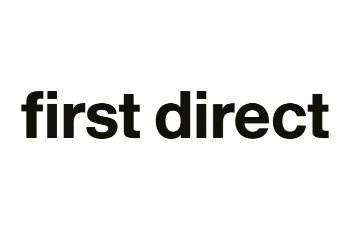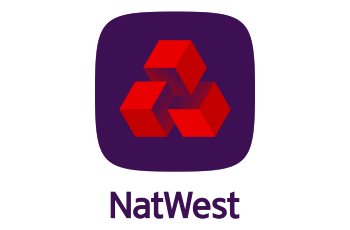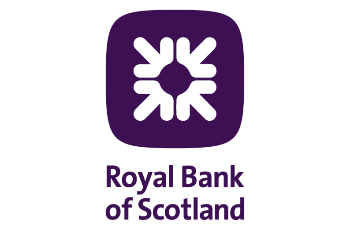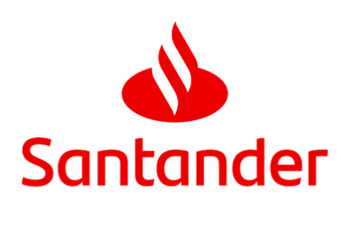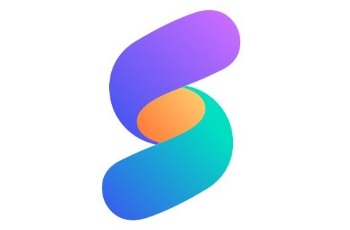Compare Latest Current Account Deals
Best Current Accounts
SPECIAL OFFER - Switch to a 1st Account and get £175*. Requires credit check. New customers only and T&Cs apply. Within 45 days of your account opening you need to: switch to first direct using the Current Account Switch Service (including at least 2 Direct Debits or standing orders), deposit £1,000, make 5+ debit card payments, and log on to digital banking. New customers only, who haven’t previously held a first direct product. first direct also can’t offer this to people who have opened an HSBC current account on or after 1 January 2018. Offer can be withdrawn at any time. Subject to status. UK residents only
Get a £200 welcome when you switch your current account using the Current Account Switch Service*
Get a £200 welcome when you switch your current account using the Current Account Switch Service*
Get a £200 welcome when you switch your current account using the Current Account Switch Service*
Get a £200 welcome when you switch your current account using the Current Account Switch Service*
Finding the best current account
While the average easy access savings account is paying just under 0.4% interest, surprisingly some of the best interest-earning accounts in the UK market presently are current accounts.
With a number of banks keen to attract new customers some high interest current accounts are paying competitive interest. These accounts have different criteria and we have summarised below some of the most attractive accounts currently on offer:
Santander Everyday Account »
Fee free account for everyday needs.
- No minimum monthly funding
- No monthly fee
- Get cashback, vouchers, prize draws and other offers personalised to you when you use Santander Boosts
- Mobile banking app
- Arrange overdraft facility available (subject to status)
- FSCS Protected
For more information and to apply for Santander Everyday Account
Santander Edge Up Account »
3.50% AER interest on balances up to £25,000 and cashback available.
- 3.50% AER/3.45% gross (variable) on balances up to £25,000
- 1% cashback (up to £15 a month) on selected household bills when you pay by Direct Debit
- 1% cashback (up to £15 a month) at supermarkets and on travel costs when you use your debit card (exclusions apply)
- Make international payments with no extra fees
- £5 monthly fee
- Must pay a minimum of £1,500 into the account each month
- Arranged overdraft facility (subject to status)
- FSCS Protected
For more information and to apply for Santander Edge Up Account
Guide to Comparing Current Accounts in the UK
Understanding Current Accounts
What is a Current Account?
A current account is a type of bank account that provides you with a range of services to manage your money effectively. It is designed for everyday use, enabling you to deposit and withdraw funds, make payments, and perform various transactions. With a current account, you can enjoy easy access to your money through debit cards, checks, and digital banking platforms.
A key characteristic of current accounts is their flexibility, allowing you to access your funds whenever you need them without any restrictions on the number of transactions. This makes it a suitable choice for managing your regular expenses, such as utility bills, rent, and groceries.
Benefits of Having a Current Account
Opening a current account offers several advantages that simplify your financial life. Some of the key benefits include:
- Convenience: Current accounts provide a convenient way to manage your money, giving you the freedom to carry out transactions easily and access funds whenever required.
- Payment Processing: You can set up direct debits and standing orders, ensuring that your recurring bills and payments are made on time, reducing the risk of late fees.
- Debit Card Access: Current accounts typically come with a debit card, allowing you to make purchases both in-store and online, without the need to carry cash.
- Safety: Keeping your money in a current account is generally safer than storing it at home. Banks offer security measures to protect your funds from theft or loss.
- Interest-Free Overdraft: Some current accounts provide an interest-free overdraft facility, giving you a cushion for temporary financial shortfalls.
Key Features of Current Accounts
Before you start comparing different current accounts, it's essential to understand the key features that distinguish them:
- Interest Rates: Some current accounts offer interest on the money you keep in your account, while others provide no interest at all.
- Fees and Charges: Current accounts may have various fees, including monthly account fees, transaction charges, and overdraft fees. It's crucial to compare these fees to avoid unnecessary expenses.
- Overdraft Facilities: If you anticipate occasional overdraft usage, consider the overdraft facilities available and the associated costs.
- Additional Benefits: Some current accounts come with additional perks, such as cashback offers, travel benefits, and reward schemes. Assess these extras to see which align with your needs.
- Digital Banking Services: With the rise of digital banking, many current accounts offer online and mobile banking features for convenient account management.
Factors to Consider When Comparing Current Accounts
1. Account Fees and Charges
- Some current accounts may have monthly maintenance fees, transaction charges, and fees for using other banks' ATMs. Compare these costs to find an account with reasonable or no fees.
- Look out for overdraft fees, as they can significantly impact your finances if you frequently dip into the negative balance.
2. Interest Rates and Overdraft Fees
- Check the interest rates offered by different current accounts. While interest rates on current accounts are generally low, it's still essential to find an account that offers a competitive rate on any positive balances you maintain.
- If you expect to use an overdraft occasionally, compare the overdraft interest rates of various accounts. Some accounts may offer interest-free overdrafts up to a certain limit, while others may charge high interest rates.
3. Rewards and Incentives
- Many banks provide rewards and incentives to attract new customers. These rewards may include cashback on purchases, bonuses for switching, or other loyalty programs. Assess the value of these incentives and whether they align with your spending habits.
- Keep in mind that while rewards can be appealing, it's essential to focus on the overall value of the account, including its fees and features.
4. Mobile Banking and Digital Services
- In the digital age, access to robust mobile banking services is crucial. Look for current accounts that offer user-friendly mobile apps with features like instant payments, transaction tracking, and budgeting tools.
- Consider the availability of digital wallets, contactless payments, and other innovative banking technologies that enhance your banking experience.
5. Branch and ATM Accessibility
- Consider how important physical branch access is to you. Some current accounts may have limited branch networks, while others may offer widespread coverage.
- Also, check the availability of free ATMs in your area, as using other banks' ATMs can lead to additional charges.
6. Account Eligibility and Requirements
- Some current accounts have specific eligibility criteria, such as minimum income requirements or credit checks. Ensure you meet the criteria before applying to avoid rejection.
- Additionally, check if there are any minimum deposit requirements to open the account.
Types of Current Accounts Available
In the UK, there are several types of current accounts tailored to cater to the diverse financial needs of consumers. Understanding the unique features and benefits of each type will help you choose the most suitable account for your individual requirements.
1. Standard Current Accounts
Standard current accounts are the most common type and provide basic banking services for day-to-day transactions. They often come with a debit card and offer facilities such as direct debits and standing orders. While these accounts may not offer high-interest rates on positive balances, they are suitable for individuals who require a simple account for managing their regular expenses.
2. Packaged Current Accounts
Packaged current accounts offer additional benefits beyond basic banking services in exchange for a monthly fee. These benefits may include travel insurance, mobile phone insurance, car breakdown cover, and more. Before choosing a packaged account, carefully evaluate the included perks to ensure they align with your needs. Consider whether the added benefits outweigh the monthly fee, as this will vary depending on your circumstances.
3. Student Current Accounts
Designed specifically for students, these accounts often come with tailored benefits to support young people during their academic journey. Student current accounts may offer interest-free overdrafts for a certain period, making them a popular choice among students who may need financial flexibility. As students often have limited income, these accounts typically have lower or no monthly fees.
4. Graduate Current Accounts
Graduate current accounts are targeted at individuals who have recently graduated from university. These accounts often extend the benefits of student accounts for a limited period to help graduates transition into the working world smoothly. They may offer continued interest-free overdrafts or other financial incentives to aid in the early stages of their careers.
5. Joint Current Accounts
Joint current accounts are shared by two or more people, such as couples or housemates. These accounts facilitate the management of shared expenses, making them ideal for individuals who share financial responsibilities. While joint accounts offer convenience, it's essential to maintain open communication with the account holders to avoid any misunderstandings or financial disputes.
Each type of current account comes with its unique set of features and benefits, catering to specific financial needs. When comparing different accounts, consider your financial goals, lifestyle, and eligibility requirements to make an informed decision. In the next section, we'll delve into the intricacies of comparing overdraft facilities offered by various current accounts.
How to Compare Overdraft Facilities
1. Understanding Overdrafts and Their Costs
Before delving into specific account offerings, it's crucial to have a clear understanding of how overdrafts work and the associated costs. An overdraft is essentially a line of credit provided by the bank, allowing you to spend more than you have in your account, up to a certain limit.
Overdraft costs can vary between providers, and it's essential to be aware of the fees and interest rates associated with using an overdraft. Some accounts may have lower fees for arranged overdrafts, while others may charge higher fees for unarranged overdrafts, which occur when you exceed your overdraft limit.
2. Arranged Overdrafts vs. Unarranged Overdrafts
Arranged overdrafts are pre-approved and agreed upon with the bank. They provide a structured borrowing facility and often come with lower fees and interest rates compared to unarranged overdrafts.
Unarranged overdrafts occur when you spend more money than you have in your account without prior authorization from the bank. These can lead to significantly higher charges and should generally be avoided.
3. Overdraft Interest Rates and Fees
When comparing current accounts, pay close attention to the interest rates charged on arranged overdrafts. Some accounts may offer interest-free overdrafts for a limited period, while others may charge a flat or tiered interest rate. Consider the cost of using an overdraft and choose an account with competitive rates that suit your anticipated borrowing frequency.
4. Overdraft Limits and Eligibility
Different current accounts offer varying overdraft limits, and these limits are often dependent on your creditworthiness and income. Ensure you check the maximum overdraft amount available and whether it aligns with your potential borrowing needs.
Additionally, be aware of any eligibility criteria for accessing an overdraft. Some accounts may require you to meet specific requirements, such as a minimum income or credit score.
By understanding these aspects of overdraft facilities and comparing the offerings of different current accounts, you can select an account with an overdraft facility that provides the flexibility and cost-effectiveness you require.
Assessing Additional Features and Benefits
Beyond the basic banking services and overdraft facilities, many current accounts offer additional features and benefits to attract customers. When comparing current accounts, it's essential to evaluate these extras, as they can enhance your overall banking experience and provide added value.
1. Cashback Offers
Some current accounts provide cashback rewards on specific types of spending. For example, you may earn cashback on groceries, fuel purchases, or online shopping. Assess the cashback rates and categories to determine if they align with your spending habits.
2. Travel Benefits and Insurance
If you often travel, consider current accounts that offer travel benefits such as free travel insurance, airport lounge access, or foreign transaction fee waivers. These perks can save you money and provide added peace of mind during your trips.
3. Interest-Free Overdraft Periods
Some current accounts offer an interest-free overdraft for a limited period after opening the account. This feature can be beneficial if you anticipate needing an overdraft shortly after opening your account.
4. Reward Schemes and Loyalty Programs
Certain accounts come with reward schemes that provide points, vouchers, or discounts for specific retailers or services. Loyalty programs can offer long-term benefits for staying with a particular bank.
5. Introductory Offers
When switching to a new current account, consider any introductory offers provided by banks to attract new customers. These offers may include cash incentives, higher interest rates, or other financial perks.
The Importance of Digital Banking
In the digital era, the availability of robust digital banking services has become a crucial factor in choosing a current account. Digital banking offers convenience, flexibility, and a range of tools that can significantly impact your overall banking experience.
1. Online Banking Features
Digital banking provides access to online platforms, allowing you to manage your current account from the comfort of your home or on the go.
- Account Overview: A user-friendly dashboard that provides an overview of your account balance, recent transactions, and upcoming payments.
- Transaction History: The ability to view and search through your transaction history, helping you track your spending and identify any discrepancies.
- Bill Payment: Online bill payment services that enable you to set up and manage direct debits and standing orders, ensuring your bills are paid on time.
2. Mobile Banking Applications
Mobile banking apps offer the flexibility to manage your current account from your smartphone or tablet. Consider the following features in a mobile banking app:
- Mobile Check Deposits: The convenience of depositing checks by simply taking a photo of them using the app.
- Instant Notifications: Real-time alerts for account activity, ensuring you are promptly informed of any transactions or changes.
- Money Transfer: The ability to transfer funds between your accounts or to other individuals seamlessly.
3. Security and Privacy Measures
Digital banking requires robust security measures to protect your sensitive information and funds. Look for the following security features:
- Two-Factor Authentication (2FA): An additional layer of security that requires you to enter a code sent to your mobile device when logging in.
- Biometric Authentication: The option to use fingerprint or facial recognition to access your account for enhanced security.
- Encryption: End-to-end encryption to safeguard your data during online transactions and communication with the bank.
4. Contactless Payments and Digital Wallets
Contactless payments and digital wallets offer a convenient and secure way to make purchases both in-store and online. Consider whether the current account supports popular digital wallets like Apple Pay, Google Pay, or Samsung Pay, allowing you to make seamless payments using your smartphone or smartwatch.
Digital banking services are integral to modern-day banking, offering efficiency and accessibility to manage your finances. When comparing current accounts, ensure the one you choose provides a comprehensive and user-friendly digital banking experience.
How to Switch Current Accounts
1. The Current Account Switch Service (CASS)
CASS is an initiative introduced by UK banks and building societies to simplify the process of switching current accounts. It ensures that your switch is completed within seven working days while guaranteeing all your incoming and outgoing payments are transferred to your new account without any disruption.
2. Steps to Switching Accounts
Follow these simple steps to switch your current account hassle-free:
- Step 1: Choose Your New Account: Compare current accounts to find one that best suits your needs. Ensure the new account offers all the features and benefits you require.
- Step 2: Contact Your New Bank: Once you've chosen your new account, contact the bank to start the switching process. They will guide you through the application and inform you about the documentation needed.
- Step 3: Complete the Application: Fill out the application form provided by your new bank and submit any required documents, such as identification and proof of address.
- Step 4: Authorise the Switch: Once your application is approved, you'll be asked to provide your consent for the switch to begin. This step ensures a smooth transfer of your funds and transactions.
- Step 5: Seven-Day Switch: The switch will commence, and within seven working days, your new account will be fully set up. During this period, your incoming and outgoing payments will be transferred to your new account automatically.
- Step 6: Close Your Old Account: Once your new account is up and running, you may choose to close your old account. If you have any remaining balance in your old account, it will be transferred to your new account.
3. Switching Bonuses and Incentives
Many banks offer switching bonuses and incentives to attract new customers. These may include cash rewards or other financial benefits. When switching accounts, consider whether the new bank offers any incentives that add value to your decision.
Managing Your Current Account Effectively
Managing your current account effectively is essential for maintaining good financial health and avoiding unnecessary fees or charges. Here are some essential tips and tools to help you make the most of your current account:
1. Budgeting Tips and Tools
- Track Your Expenses: Keep a record of your monthly expenses to understand where your money is going. You can use budgeting apps or spreadsheet templates to track your spending.
- Set Financial Goals: Establish clear financial goals, such as saving for a vacation or paying off debt. Budgeting will become more manageable when you have specific objectives in mind.
- Review Your Budget Regularly: Revisit your budget regularly to assess your progress and make adjustments as needed. This will help you stay on track and identify areas where you can cut back on spending.
2. Avoiding Overdraft Fees
- Monitor Your Account Balance: Keep a close eye on your account balance to avoid going into an unplanned overdraft. Set up balance alerts on your mobile banking app to receive notifications when your balance is low.
- Opt for Arranged Overdraft: If you anticipate needing an overdraft, arrange it with your bank beforehand. An arranged overdraft usually has lower fees compared to unarranged overdrafts.
- Keep a Buffer: Aim to maintain a small buffer amount in your account to avoid accidental overdrafts. Even a small reserve can help prevent unnecessary charges.
3. Tracking Transactions and Payments
- Check Your Statements: Regularly review your bank statements to ensure all transactions are accurate. If you spot any discrepancies, report them to your bank immediately.
- Schedule Payments Wisely: Arrange your direct debits and standing orders to coincide with your income deposits. This will help ensure sufficient funds are available when bills are due.
- Avoid Late Payments: Pay your bills on time to avoid late fees and potential damage to your credit score. Set reminders or automate payments to stay on top of your financial obligations.
4. Regular Account Reviews
- Assess Your Account Usage: Periodically review your current account's usage and features. If your needs have changed, consider switching to an account that better aligns with your current financial situation.
- Evaluate Benefits and Perks: Check if you are maximising the benefits and rewards offered by your current account. Make use of cashback opportunities, travel benefits, or loyalty programs, if available.
- Stay Informed: Keep yourself informed about changes to your bank's terms and conditions, fees, and interest rates. Being aware of any updates will help you make informed decisions about your banking needs.
By effectively managing your current account and following these tips, you can optimise your financial management and ensure that your banking experience remains smooth and cost-effective. Regularly reviewing your financial habits and making adjustments as needed will contribute to your overall financial well-being.
Frequently Asked Questions (FAQs)
1. What is the best type of current account for me?
The best type of current account depends on your individual financial needs and preferences. Consider factors such as how frequently you use overdraft facilities, whether you need additional perks like cash back or travel benefits, and your eligibility for specific account types (e.g., student or graduate accounts). It's essential to compare the features, fees, and benefits of various accounts to find one that aligns with your requirements.
2. How can I avoid unnecessary fees on my current account?
To avoid unnecessary fees on your current account:
- Opt for an account with no or low monthly fees, especially if you don't require additional benefits offered by packaged accounts.
- Stay within your arranged overdraft limit to avoid unarranged overdraft fees.
- Keep a close eye on your account balance and set up balance alerts to prevent accidental overdrafts.
- Make payments on time to avoid late fees and potential damage to your credit score.
3. Can I switch my current account if I have an overdraft?
Yes, you can switch your current account even if you have an overdraft. The Current Account Switch Service (CASS) ensures that your overdraft is transferred to your new account along with all your other payments and transactions. However, the new bank may assess your creditworthiness and determine whether they can provide an overdraft facility based on their criteria.
4. Will switching current accounts affect my credit score?
Switching current accounts through the Current Account Switch Service (CASS) should not impact your credit score. The CASS is designed to ensure a smooth transfer of your payments and does not require a new credit check. However, if you apply for an overdraft with your new account, the bank may conduct a credit check, which could have a minor impact on your credit score.
5. What should I consider before opening a joint current account?
Before opening a joint current account:
- Ensure all account holders trust each other and have a clear understanding of their financial responsibilities.
- Discuss and agree on how the account will be managed, including contributions, spending limits, and bill payments.
- Understand that each account holder is jointly liable for any overdraft or debt accrued on the account.
- Choose an account that offers the features and benefits that meet the needs of all account holders.

